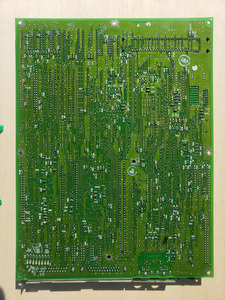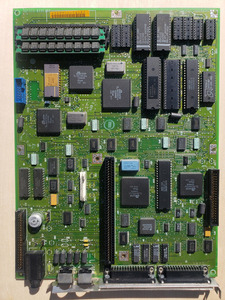Reply 40 of 46, by snufkin
Yep, that says there's a short from -12V to Ground. All you need to do is find the cause of the short...
If all the tants are removed then I'd start by checking any socket for bent or mangled pins, or anything in the sockets that might be causing a short. Also look closely at the front and back to see if any small ceramic capacitors look like they've (or any traces nearby) got hot. It's rare (as Deunan said) but ceramics can fail short.
Page 154 of the service manual ( http://www.nj7p.org/Computers/IBM%20PC/work/PS2_Model_25.pdf ) says:
The + 12 V dc and -12 V dc are used for powering the Electronic Industries Association (EIA) drivers for the serial port.
All four power levels are bused across the two system expansion slots.
So also have a look around the DS1488 (I think I see that on the photo I found) that I think is the line driver for the serial ports and should have -12V on pin 1.
Good well lit photos of the front and back of your board might help someone spot if there's anything that looks odd, and might help trace where -12V is routed.

